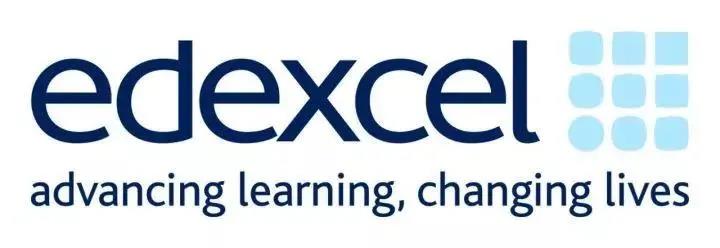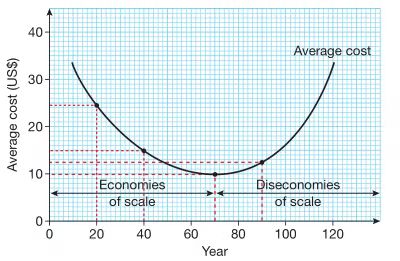同学们好啊!今天我们的经济考试真题解析版块,带大家一起来看下爱德思考试局IG阶段2020年1月的题目,包括5道选择题和1道essay题目。

刷真题是我们复习过程中的重要环节,但是我们不能光为了刷题而刷题,而是要通过做真题来了解学科结构,分析出题思路,来查找我们对知识点掌握中有哪些缺失,从而有针对性地去着重复习。
特别是在复习后期,时间紧迫,我们要提高复习效率,把有限地时间最大程度地利用起来去攻克我们的薄弱环节,才能最大程度地快速提分。
爱德思考试局有它特有的形式,那我们就以一下几道题为例,带大家去分析对应的考点和解题方法吧~
第一题

答案:D
考点:考察PES的概念
解析:
PES的定义:responsiveness of supply to a change in price。
PES的公式:

它的含义是,price的变化程度会带来多大程度的quantity supplied的变化。
当PES<1,我们叫它inelastic,即quantity supplied的变化程度小于price的变化程度;
当PES>1,我们叫它elastic,即quantity supplied的变化程度大于price的变化程度。
另外,还有三个特殊值我们需要掌握:
当PES=0,supply is perfectly inelastic;
当PES=∞,supply is perfectly elastic;
当PES=1,supply has unitary elasticity。
这里考察的就是三个特殊值之一的perfectly inelastic supply,由上述可知为0。
第二题

答案:D
考点:考察total fixed costs的计算
解析:这道题的计算比较直接,我们可以直接套公式。但在计算之前,我们先一起来理清一些概念。
Total costs由两部分组成,fixed costs和variable costs:
Fixed costs是指不会随着产量的变化而变化的成本,比如租金,广告费,这些费用不管产出一个单位的产品还是一百个产品都需要付,而且不变。
Variable costs是指会随着产量的变化而变化的成本, 比如原材料,人工费,如果产量增加,这些费用也会随之增加,如果产量减少,这些费用也会跟着下降。
好,我们回到这道题,具体的计算如下:

第三题

答案:A
考点:考察demand和supply的图形
解析:
excess demand,也叫做shortage是指quantity demand多于quantity supply。
在选项A中,在Pe level时,demand曲线和supply曲线相交,quantity demand和quantity supply相同,都是Qe。
在P1 level时,quantity demand是Q2, quantity supply是Q1, Q2>Q1, quantity demand多于quantity supply,符合excess demand的描述。
在做题的时候我们不仅要能选出正确的选项,也要知道其他选项分别是什么意思,那就让我们一起再来看看其他选项:
选项B:是指在demand curve线上的移动,向上的移动使quantity demand下降,叫做constraction, 向下的移动使quantity demand上升,叫做extension。
选项C:是指在P1 level时,quantity supply(Q2)大于quantity demand(Q1),叫做excess supply,也叫做surplus。
选项D:是指demand curve向左移动,叫做decrease in demand。
第四题

答案:B
考点:考察factors of production
解析:
我们学过的factors of production有4个,分别是land, labour, capital和enterprise。
我们一起来具体看下这4个生产要素:
land不仅仅指土地,而是所有的用于生产的自然资源,比如石油,煤矿。
Labour是用于生产的人力资源。
capital是人造的帮助生产的机器设备之类的产品。
最后一个enterprise是管理其余三个factor,在生产中起到做决定和承担风险的角色。
第五题

答案:B
考点:考察economies of scale和diseconomies of scale
解析:
Economies of scale是指随着公司规模的扩张,平均成本会下降。
Diseconomies of scale是指如果公司规模过大,平均成本反而会上升。
因此平均成本的图形会呈现如下图形:

Economies of scale又分为internal economies of scales和external economies of scale。
Internal economies of scale是指一个公司因为自己的规模变大而享受到的成本下降。原因如下:

而external economies of scale是指一个公司因为整个行业的规模变大而享受到的成本下降。External economies of scale包含:skilled labour,infrastructure,access to suppliers, similar business in the area。
回到这道题,选项A中的Bulk buying指当采购量比较大时,我们通常可以花更低的价格来买,所以它属于purchasing economies,和选项D managerial economies(即随着公司规模变大,能够有钱雇佣更多的专业人士来管理,从而提高效率,降低平均成本)一样,都属于internal economies of scales。
选项B我们上面已经提到了,属于external economies of scale,符合题意。
而选项C中的bureaucracy是指一种管理体制,需要用到很多的部门和员工,因此如果一个公司花费太多的资源在管理上,太多的时间用于填表交报告,做决定,那平均成本就会上升,属于diseconomies of scale。
Essay题目

考点:small firms的优缺点
得分点:
Demonstrates clear knowledge and understanding by developing relevant points. Appropriate application of economic terms, concepts, theories and calculations (3分).
Information presented will demonstrate excellent selectivity and organisation. Interpretation of economic information will be excellent, with a thorough analysis of issues (3分).
Offers more than one viewpoint. The argument is well balanced and coherent, leading to an evaluation that demonstrates full understanding and awareness (3分).
解析:
这道题的本质是分析small firm的优缺点,但是需要根据题中给出的信息来阐述,考察的是我们把知识点结合实际案例运用的能力。
并且像这种“assess whether。。。”的题型,必须从正反两方面去叙述才能体现完整性和拿到高分。
另外我们在回答时要注意逻辑性,一步步推出结论,我在下述答案中用箭头来表示推理逻辑。
答案:
Part 1: benefits of remaining a small firm:
offer a personal service => meet the needs of the customer more specifically than large firms
- maybe more likely to attract customers => more sales
- cater for a niche part of the market => some customers may pay higher prices
maintain control of her business => help the environment by producing candles made with soy wax and essential oils
Increasing production => may no longer be handmade => lose its identity
Part 2: problems of remaining a small firm:
may struggle to meet demand ==> may lose customers
could potentially sell many more environmentally-friendly candles through use of the production facilities on offer => help the environment
cannot exploit economies of scale => higher unit costs => lower profits




